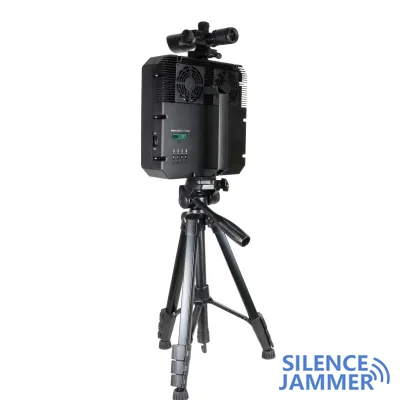In modern society, the security and privacy of information have become more and more important, especially in occasions such as conferences, examination rooms, and military facilities that require extremely high confidentiality of information. The use of mobile phone jammers has become an effective means. However, in addition to common mobile phone signals, Bluetooth technology is also widely used in data transmission, wireless headsets and other devices. So, can mobile phones signal jammer block Bluetooth signals? This article will discuss the principles, impacts and practical applications.

1. Working principle of mobile phone jammer
Cell phone jammers, also known as signal jammers, interfere with communications between mobile phones and base stations by emitting electromagnetic waves of specific frequencies. The main frequency bands targeted by mobile phone jammers include:
GSM (900/1800 MHz): used for 2G communications.
CDMA (800 MHz): used for 2G communications.
WCDMA (2100 MHz): used for 3G communications.
LTE (700/800/1800/2600 MHz): used for 4G communications.
5G (3.5 GHz and other frequency bands): For the latest 5G communications.
These frequency bands cover most of the current mobile communication networks, effectively blocking mobile phone signals.
2. Bluetooth working frequency band
Bluetooth technology mainly operates in the 2.4 GHz frequency band, which is also known as the Industrial, Scientific and Medical (ISM) band. Because Bluetooth uses frequency hopping spread spectrum technology (FHSS), its signal jumps between 79 1 MHz sub-channels, thereby reducing interference and improving the reliability of data transmission.
3. The impact of mobile phone jammers on Bluetooth signals
From a technical point of view, if the frequency band covered by the mobile phone jammer includes 2.4 GHz, then it can theoretically interfere with Bluetooth signals. this means:
Traditional mobile phone jammers: These jammers mainly target the mobile phone communication frequency band, so they have less impact on Bluetooth signals.
Broad spectrum jammer: If the jammer is designed to cover the 2.4 GHz band, it will not only interfere with WiFi signals (also working in the 2.4 GHz band), but also affect the normal operation of Bluetooth devices.
4. Considerations in Practical Application
In practical applications, whether Bluetooth signals need to be blocked depends on the specific needs of the scenario:
Conference room: In high-security meetings, in addition to mobile phone signals, Bluetooth may also become a way for information leakage. At this time, using a shield covering 2.4 GHz is necessary.
Examination room: The main purpose of the examination room signal jammer is to prevent candidates from using mobile phones to cheat. Usually, Bluetooth signals are not deliberately blocked unless candidates are found to be using Bluetooth to cheat.
Military installations: In these highly classified environments, it is common practice to block all wireless communication signals, including Bluetooth, to ensure the absolute security of information.
5. Side effects of blocking Bluetooth signals
Although blocking Bluetooth signals can increase security, it can also cause some inconveniences:
Wireless devices cannot be used: Bluetooth headsets, mice, keyboards and other devices will be affected and cannot work properly.
Decreased WiFi performance: WiFi signals in the 2.4 GHz band will also be interfered with, affecting the quality of the network connection.
A cell phone jammer can block Bluetooth signals, but only if it covers the 2.4 GHz band. In situations with high confidentiality requirements, blocking Bluetooth signals is an effective means to ensure information security. However, when selecting and using a jammer, you need to weigh safety and ease of use, and choose the most suitable solution to meet actual needs. Through scientific and reasonable application, signal shielding technology can minimize interference to daily life and work while ensuring information security.


